Landscaping done improperly will certainly damage your beautiful trees and garden. Knowing how to landscape around the trees in your yard or garden without harming them will help you create a welcoming and healthy environment.
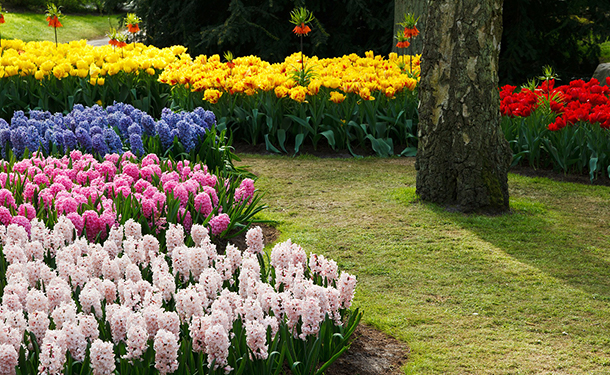
thetreecareguide.com gathered information on the best practices for landscaping around trees, and the improper practices that harm and kill them.
How Do You Landscape Around a Tree?
Landscaping the area around or under a tree – without damaging it – will require you to pay special attention to the following:
Surface Roots – Whether roots have surfaced from poor watering practices or as an inherent trait of the species, these roots must be protected from injury. Damaged surface roots serve as efficient vectors for tree diseases, weakening the tree’s defenses, allowing boring insects to then successfully attack/infest the tree. Protect these roots by:
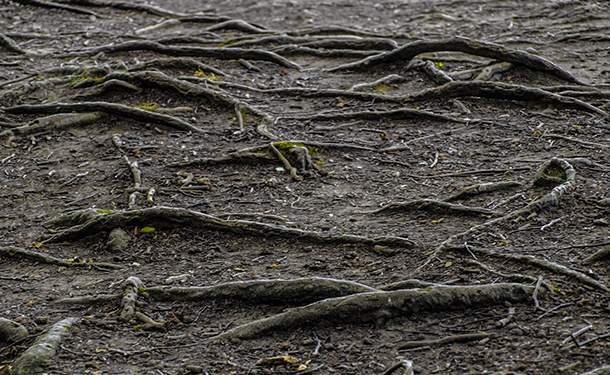
- Raising the soil level enough to cover the exposed roots (without covering the tree’s root flare).
- Mulching the area with three to five inches of organic mulch.
- Providing the tree with more frequent deep waterings (this encourages roots to grow deep).
- Prohibiting foot, vehicle, or machinery traffic where these roots are exposed.
- Hiring a professional tree service to perform root pruning.
Note: Root pruning poses a high risk to the tree’s health and should be considered only as a last resort.
Soil Compaction – Tree roots rely on soil porosity to fulfill their mission (collect and provide the tree with water, nutrients, and oxygen). In healthy soil, pores are large and frequent enough to capture water, oxygen, and nutrients that trees absorb through their roots. Soil compaction compresses the soil, dramatically reducing its porosity and delivery capability. Prevent soil compaction by:
- Eliminating all foot, equipment, and vehicle traffic within the tree’s drip line (all of the ground surface beneath the crown).
- Applying organic mulch or compost in the fall and spring months.
- Planting turf or small plants that help the soil remain porous and prevent erosion.
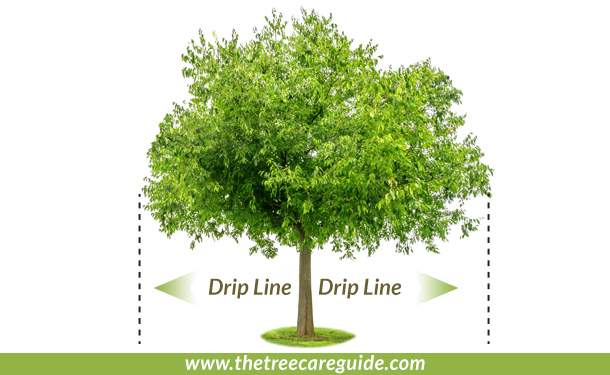
Read more on reversing and preventing soil compaction at thetreecareguide.com/soil-compaction-solutions/
Volcano Mulching – Nearly every set of instructions for healthy tree growth tells you to mulch, mulch, mulch. While proper mulching is necessary for tree, plant, and soil health, volcano mulching is a fast way of compromising your landscape’s overall health.
A mulch volcano happens when mulch is piled high against a tree trunk (resembling a volcano). This act traps moisture around a tree’s root flare, creating a perfect environment for disease development, small wildlife habitation, and insect infestation. Prevent mulch volcanoes by:
- Applying mulch (3 to 5-inches deep) to the entire area beneath a tree’s canopy, leaving a hole in the center like a giant donut.
- Pulling mulch back approximately 6-inches from the trunk, allowing the root flare to breathe.
- Occasionally removing debris or wind-blown mulch from the area around the trunk.
Find further information on the dangers of volcano mulching at thetreecareguide.com/volcano-mulching-can-kill-your-tree/
Digging Around A Tree – Regardless of your landscaping plans, try to avoid digging around a tree. Especially on the root plate (the area where roots are most highly concentrated). The root plate extends from the tree’s trunk to the extremity of the dripline, and the vast majority of its roots are found within the top 6 to 12-inches of soil.
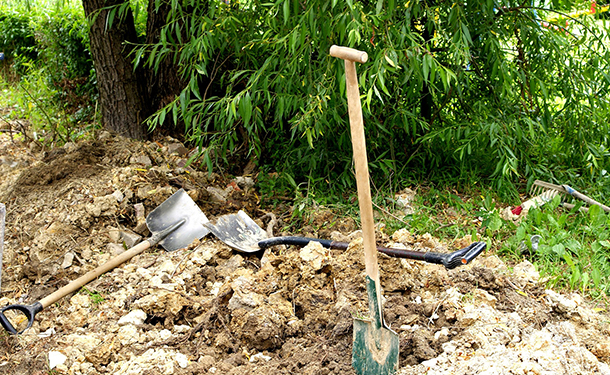
When digging around a tree is necessary, hire an arborist to supervise or conduct the digging. An arborist can take immediate action to safeguard the tree when roots are damaged or severed.
Flower Beds Around Trees
A popular feature of landscaped yards is installing a flower bed or planting plants and shrubs around their trees. While attractive, be aware of the following bad practices:
Don’t Add Soil Over Turf – Some may believe that buried grass would decompose under the new soil. However, it is more likely that buried grass would compress into a thick layer of thatch, acting as a barrier between tree roots and the oxygen, water, and nutrients they seek.
Solution: Remove turfgrass and other vegetation before laying a planting layer of soil.
Avoid Raised Borders – A common feature that is a dangerous mistake is to build a raised brick or stone border around the base of your tree, fill it in with soil, and use it as a planting bed (Doing this will result in your tree’s death). This additional soil at the tree’s base will cause the root flare and bark to rot, leaving the tree vulnerable to disease and insect infestation.
Solution: Construct an inside border 12 to 18-inches away from the trunk, then build an outside border around it to create the raised flower bed.
Avoid Raising Soil Levels – The area at the base of a tree where the trunk transforms into roots is called the root flare and is normally found just above ground level. Covering the root flare in an attempt to raise the soil level will ultimately lead to root rot and the tree’s rapid decline.
Solution: Leave your tree’s soil level where it is and relocate/reconfigure this aspect of your project.
Rock Beds Around Trees
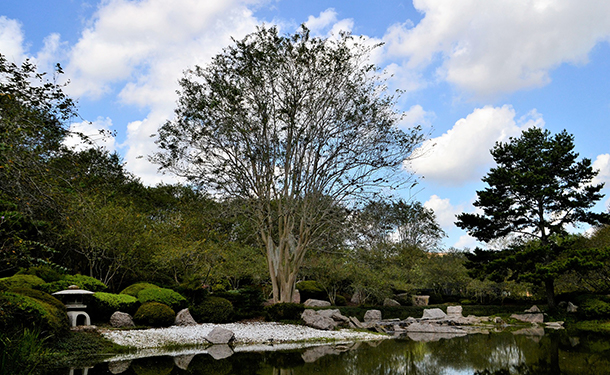
Landscaping with rocks around trees can dramatically improve a yard’s appearance. Watering grass and landscaping uses nearly half of a home’s water consumption. Landscaping/mulching with rock substantially decreases the amount of water needed to support vigorous tree, shrub, plant, and grass growth. Spreading small rocks around trees serves as an inorganic mulch, preventing weed growth, regulating soil temperature, and retaining moisture.
Is it OK to Put Landscape Fabric Around Trees?
This answer depends on who you talk to:
Yes – Gardeners who use landscape fabric use it to stop rock mulch from sinking or disappearing into the soil, prevent soil erosion, and dramatically reduce weeds.
No – Those against landscape fabric claim that decomposition gradually clogs the fabric’s drainage pores, that it limits soil biodiversity, and reduces organic soil material.
Considering the pros and cons of landscape fabric, organic alternatives like wood chips or shredded bark would seem to accomplish much of what landscape fabric does while adding valuable nutrients to the soil as they decompose.
Build a Deck or Patio Around a Tree
What do you do with a mature sprawling tree or tall shade tree in your backyard? Build a deck or patio around it.
Some of the benefits of a deck or patio around a tree include:
- Potential soil compaction is eliminated
- Foot traffic on the soil beneath the tree is eliminated
- Rainwater, falling leaves, and oxygen can still be absorbed by the soil
- A well-built deck or patio can increase your home’s resale value
Note: The deck should be built with ample spacing (minimum of 2-feet) from the tree trunk, allowing for growth.
Tip: The idea of building a deck or patio around your tree is intended for mature, well-established trees. When built around younger trees, they can potentially outgrow the deck or patio, resulting in costly repairs or adaptations.
Landscaping Around Trees
In this article, you discovered how to landscape around a tree and which practices can lead to tree decline and death.
Knowing how to landscape around a tree will help you create a comfortable backyard living space or an attractive front yard display.
Improper mulching, digging, and landscaping practices can lead to the weakening and death of your tree.
Sources:
agrilifeextension.tamu.edu/faqs/how-much-mulch-should-i-use-around-a-tree/
extension.psu.edu/mulching-landscape-trees
nwdistrict.ifas.ufl.edu/hort/2016/08/12/consider-landscape-fabric-carefully/
extension.unl.edu/statewide/dakota/Horticulture/Raised%20Beds%20Around%20Trees.pdf